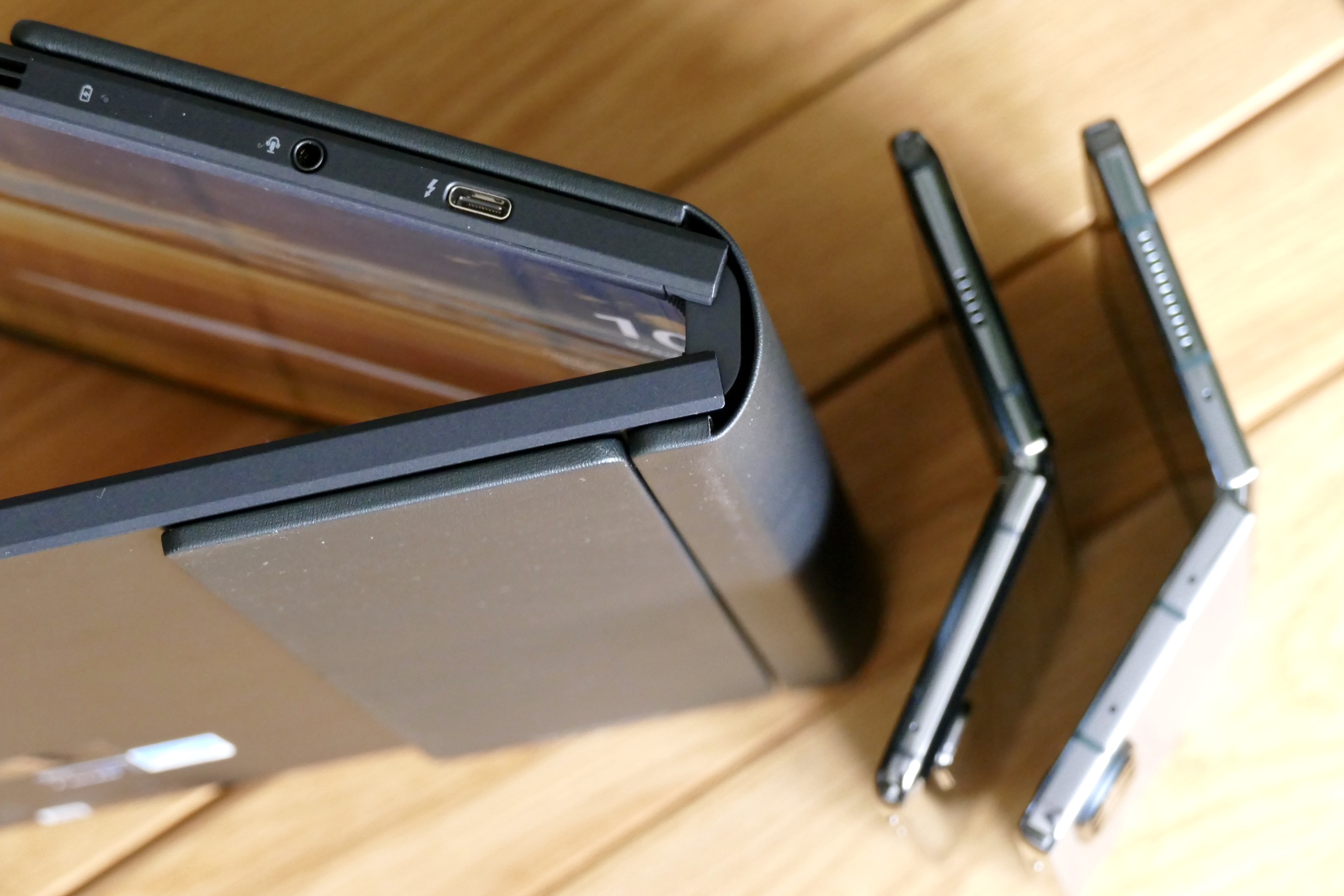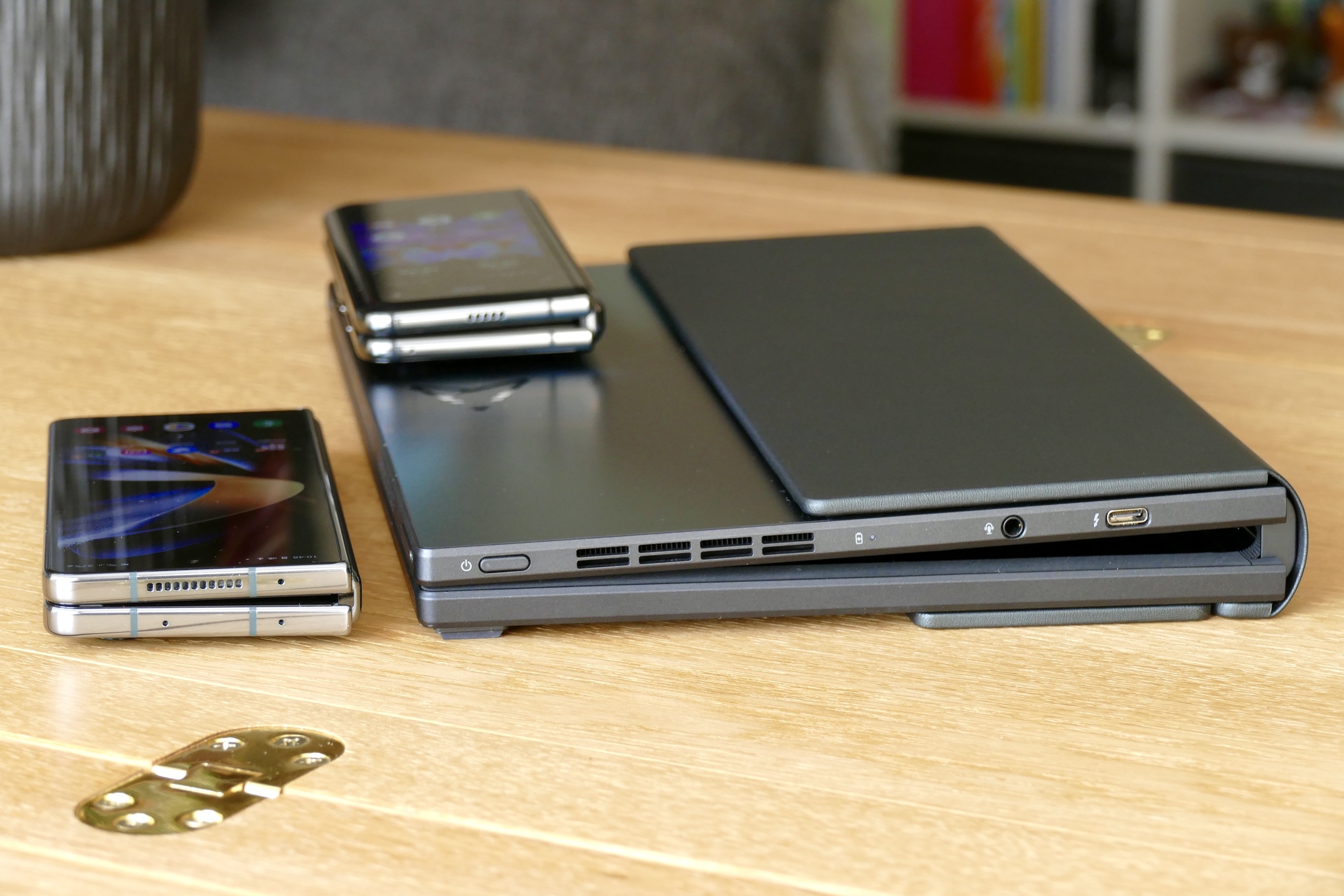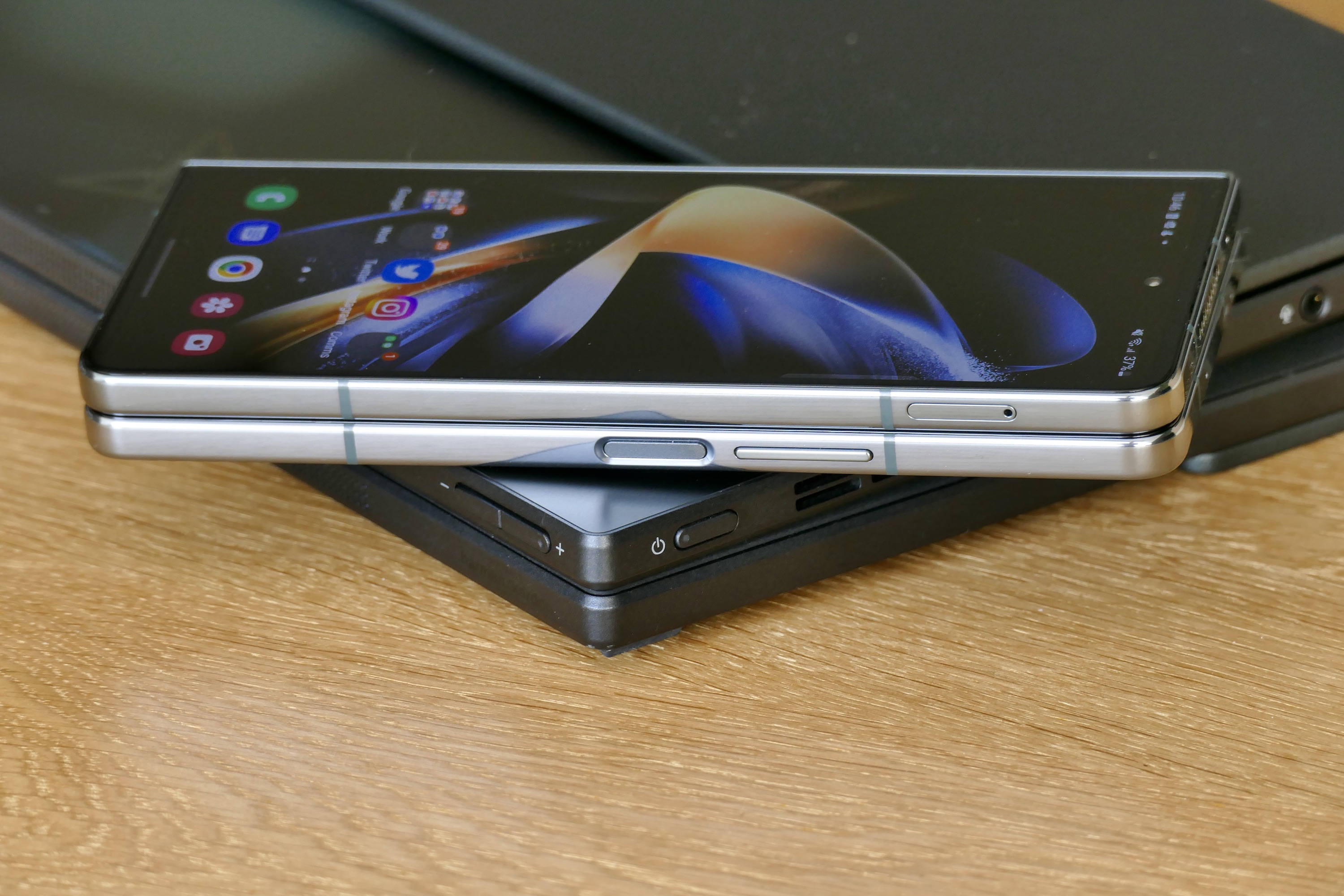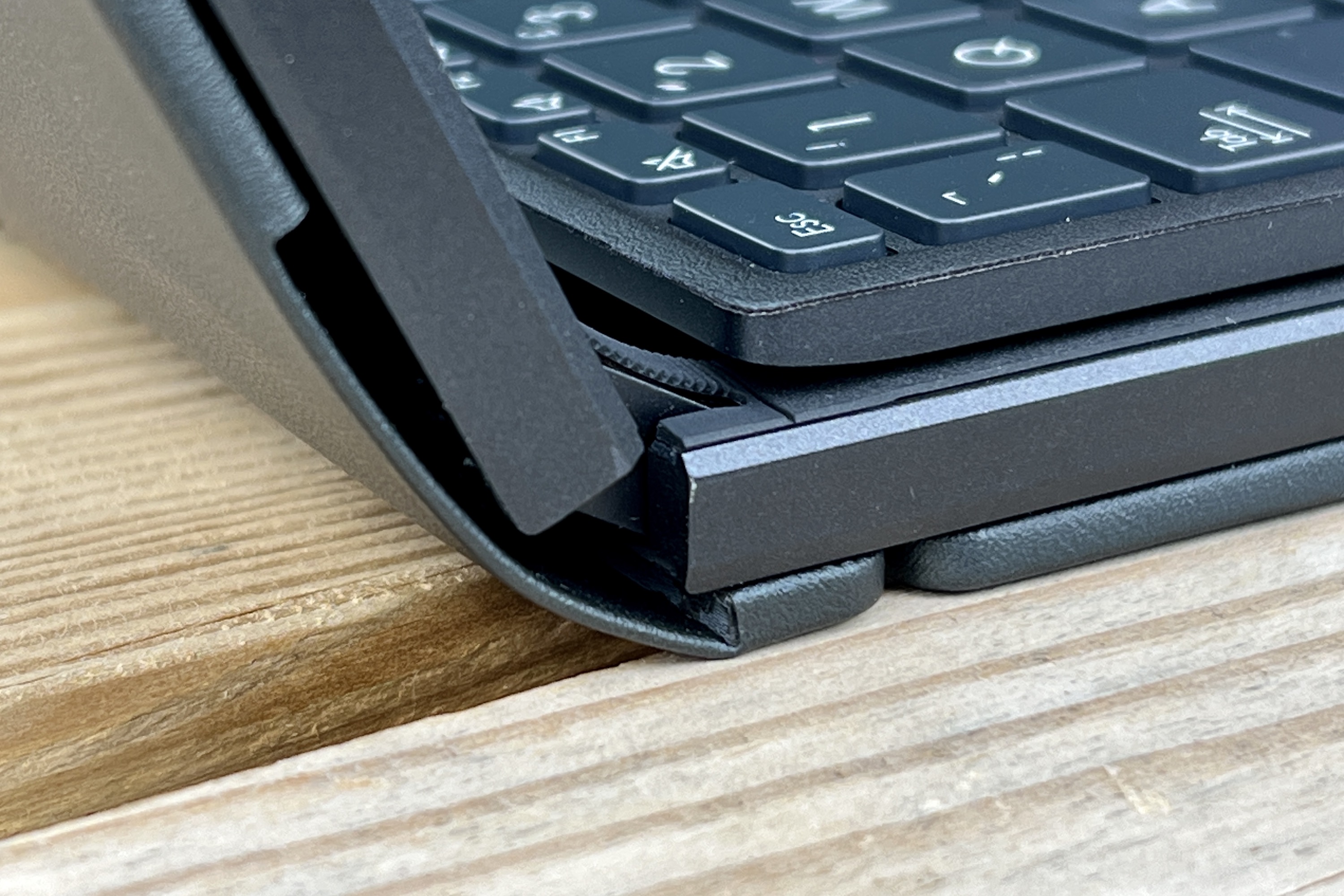I’m a huge proponent of folding smartphones, I think the futuristic design provides truly meaningful benefits and using one continues to be a very special experience. Therefore when I was given the chance to live with the Asus Zenbook Fold 17, a folding laptop, it was an opportunity too good to pass by.
However, the Zenbook Fold 17 isn’t all that good. But rather than put me off the idea of folding laptops, it made me even more excited about them, because, for a start, folding smartphones weren’t very good either.
Why isn’t it very good?

The Asus Zenbook Fold 17 is like a Galaxy Fold on steroids, and everything that frustrated about Samsung’s first attempt at a folding phone has been repeated, just on a larger scale. It’s a device filled with compromises and concerns, and just like the Fold, you’ll have to accept, forgive, and overcome them the best you can if you want to live on the cutting-edge of laptop design.
Like what? I use a laptop for work and that means typing on it, a lot. I’m typing on the Zenbook 17 Fold right now, but not with the touchscreen keyboard. Not that it’s bad, it’s just not the fastest way. Asus packages a Bluetooth keyboard accessory that magnetically attaches to the lower portion of the screen, and it’s really well sized so I can type quickly, but that’s only after I’ve gotten used to the flex. It sits slightly proud of the screen under it due to the massive bezels and bounces up and down as you prod the keys.
Because it connects to the laptop using Bluetooth it can be used separately so you can unfold the screen and make use of the clever stand on the back, but it’s still not that stable. Plus you’ve got to carry the keyboard around with you, and like the Galaxy Fold, the Zenbook Fold 17 is not small or light. In fact, it’s as thick as at least two, perhaps even three, MacBook Airs when closed.

Just like the original Samsung Fold, the Asus folding laptop is big, unwieldy, and a bit annoying to type on. These are huge compromises when you consider a non-folding laptop doesn’t usually have these issues, and if it did, you wouldn’t dream of buying it. That’s not good news for the Zenbook Fold 17. However, don’t write it off yet.
All about the screen
Unfolding the Zenbook Fold 17 to its full, 17-inch glory is amazing. It’s by far my favorite part, as I get to watch videos on a giant screen without the inconvenience of the device taking up a giant amount of space when I’m done. It has effectively replaced my 11-inch iPad Pro for casual viewing. Unsurprisingly, it’s the same reason watching videos and playing games on a folding smartphone is so joyous, and it’s something the Galaxy Fold got right immediately too.

Staying with the screen, the crease is visible but not that noticeable when you run your finger over it, but far worse, just like the original Fold, is the screen isn’t covered in glass, but a not-very-slidey plastic that’s probably quite durable, but unpleasant to touch. The screen doesn’t get very bright, the surface is irritatingly reflective, and the viewing angles aren’t great either. Once more, I put up with all these same things to use the original Galaxy Fold for a year after its release.
The software has been solid although my demands aren’t high, and it seems to adapt acceptably enough to being folded and unfolded, switching from laptop to tablet. However, the sensitivity of the screen and its touch responsiveness is all over the place.
The original Fold was the same, especially at the edge of the screen where it was potluck if it would recognize your input or not. Repeatedly pressing on-screen buttons to get them to work was an everyday occurrence with the Fold, and touch latency problems plague the Zenbook Fold 17 too.

Finally, there’s the hinge. The problems encountered with the Fold’s hinge are well-documented and forced the company to halt its release while the mechanism was redesigned. The Zenbook Fold 17’s hinge doesn’t look anywhere near as complicated mostly because it’s covered up by a sliding panel on the back, and while I’m sure it’s very well designed, the open sides and panel gaps appear worryingly ready to be filled with all kinds of detritus over time. It’s probably fine, but having seen what happened with the Galaxy Fold, it does make me a little wary.
So bad it’s good?
It doesn’t sound good at all, does it? Here’s where it gets complicated, because, after all that, I really like the Zenbook Fold 17. It’s flawed, very expensive, and nowhere near as good as my Macbook Air as a laptop, but the Galaxy Fold was also flawed, expensive, and nowhere near as good as the Galaxy S20 Ultra. Yet I took the Fold around the world with me and it was brilliant, but only because I worked around its issues, and forgave its shortcomings.
I’m so glad I did because it helped me appreciate the work that has gone into making the Galaxy Z Fold 4 the first folding smartphone I recommend you buy. The design of the phone has been improved, the typing experience is better, the hinge is much more durable, it’s lighter, and the software has been greatly refined. It’s the reason I look at the Zenbook Fold 17 so favorably because for all its first-generation niggles and issues, I know it’s just the beginning.
Yes, the keyboard is annoying, but when I take it off and it becomes a 17-inch tablet, I forget about it pretty quickly. There’s a chance the hinge may cause problems down the road, but I’ll take the risk because using the Zenbook Fold 17 feels so damn cool. With a few slight variations, this is exactly the same way I felt about the Galaxy Fold.
If you buy the Zenbook Fold 17 you’re going to both love it and hate it, in equal measure, at different times. But just like the Galaxy Fold, it’s a genesis, and the beginning of something very special. Using it will feel transformative, exciting, and truly unique. If it’s your entry point into the world of foldable screens, I think it will turn you into a true believer, just like the Galaxy Fold did for me.







